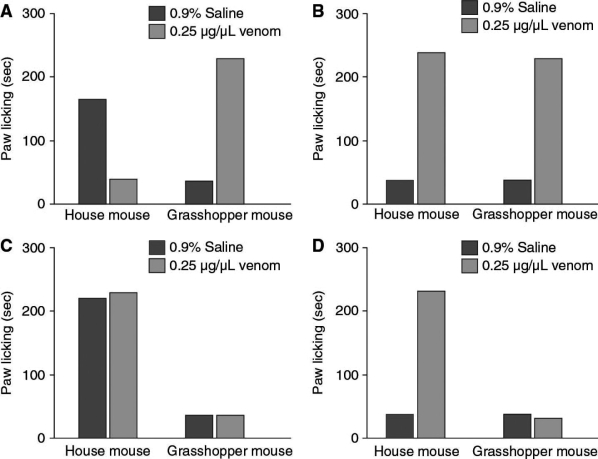Multiple Choice
Please use the following information to answer the question(s) below.
The Arizona bark scorpion is the most venomous scorpion in North America, and its bite will cause extensive pain to a human that lasts up to three days. However, the southern grasshopper mouse is essentially immune to the sting of this scorpion and actually eats the scorpions as prey. Researchers have recently elucidated the neuronal reason for why the southern grasshopper mouse does not feel pain from bark scorpion venom.
-When mice feel pain on their bodies, they lick that part of their body. Researchers injected bark scorpion venom into the hind paws of the common house mouse and the southern grasshopper mouse; they also injected 0.9% saline (essentially salt water) as a control. The researchers then observed how long the mice licked their paws. What data do you think the researchers collected? 
A) A
B) B
C) C
D) D
Correct Answer:

Verified
Correct Answer:
Verified
Q2: The major inhibitory neurotransmitter of the human
Q11: Researchers injected bark scorpion venom in mouse
Q13: An inhibitory postsynaptic potential (IPSP) occurs in
Q14: <img src="https://d2lvgg3v3hfg70.cloudfront.net/TB6148/.jpg" alt=" Figure 37.2 Figure
Q17: In Figure 37.1, the membrane's permeability to
Q18: The period in which voltage-gated potassium channels
Q35: The "threshold" potential of a membrane is
Q51: Neurotransmitters categorized as inhibitory are expected to<br>A)
Q61: Motor neurons alter skeletal muscle activities by
Q77: Most of the synapses in vertebrates conduct